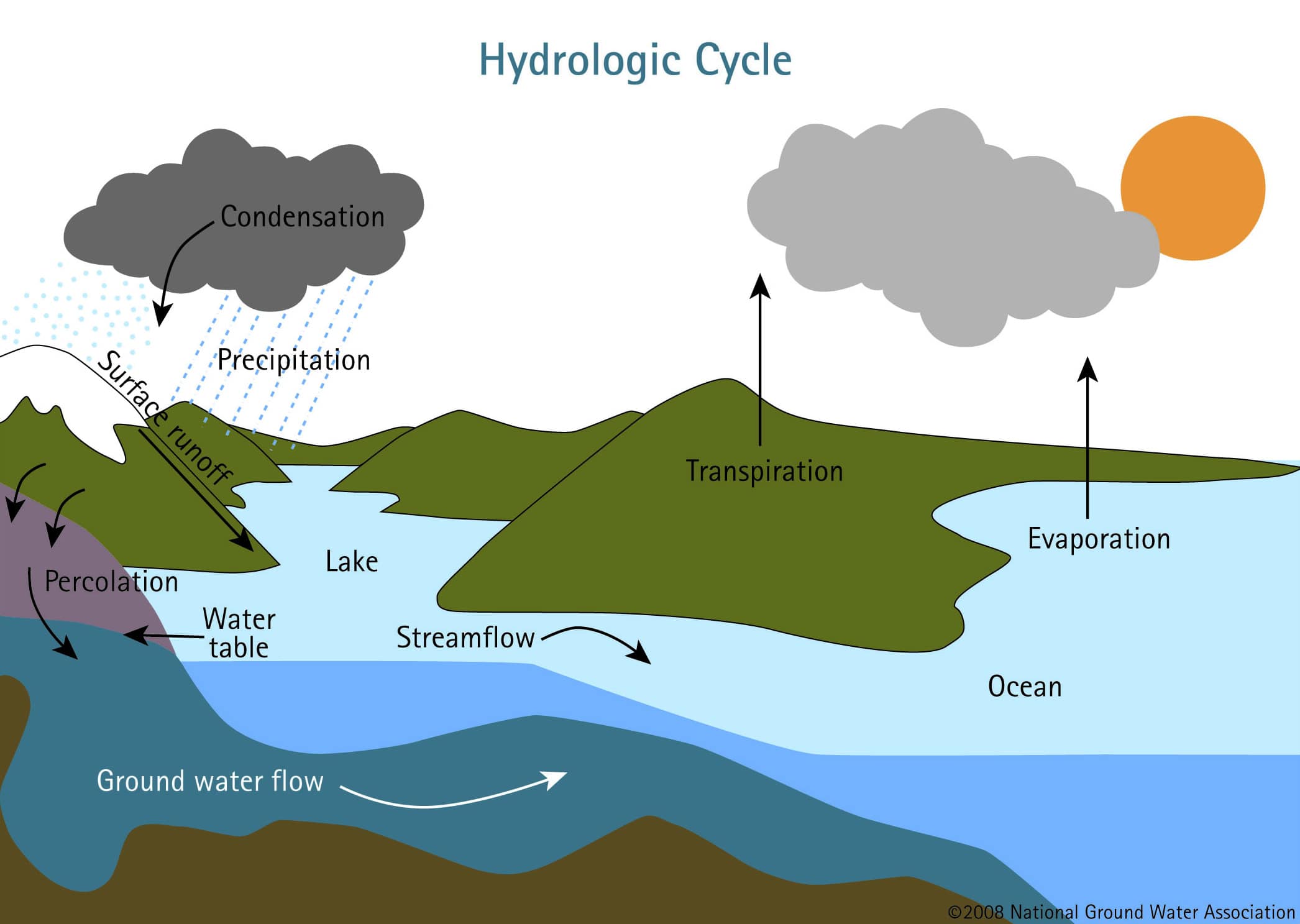Water vapor is transported by wind and air currents through the atmosphere. When the air cools, the water vapor condenses in the clouds and falls to the Earth in four fashions: rain, snow, sleet, or hail.
When it hits the ground, water can take many paths back to the atmosphere. It can be absorbed by plants; stored on the surface in a lake, river, stream, or ocean; evaporated due to the sun; absorbed into the soil temporarily; or pulled by gravity through the soil to be stored for years as groundwater.
Some of the water in the ground can return to the surface as supply water in lakes and rivers. Water on the ground surface can rejoin the atmosphere through evaporation. The water used by plants can go back to the atmosphere through a process known as transpiration. Transpiration takes place when water passes through the leaves of plants. Evaporation and transpiration—known collectively as evapotranspiration—occur during times of dry air, sunshine, or high temperatures and wind.



